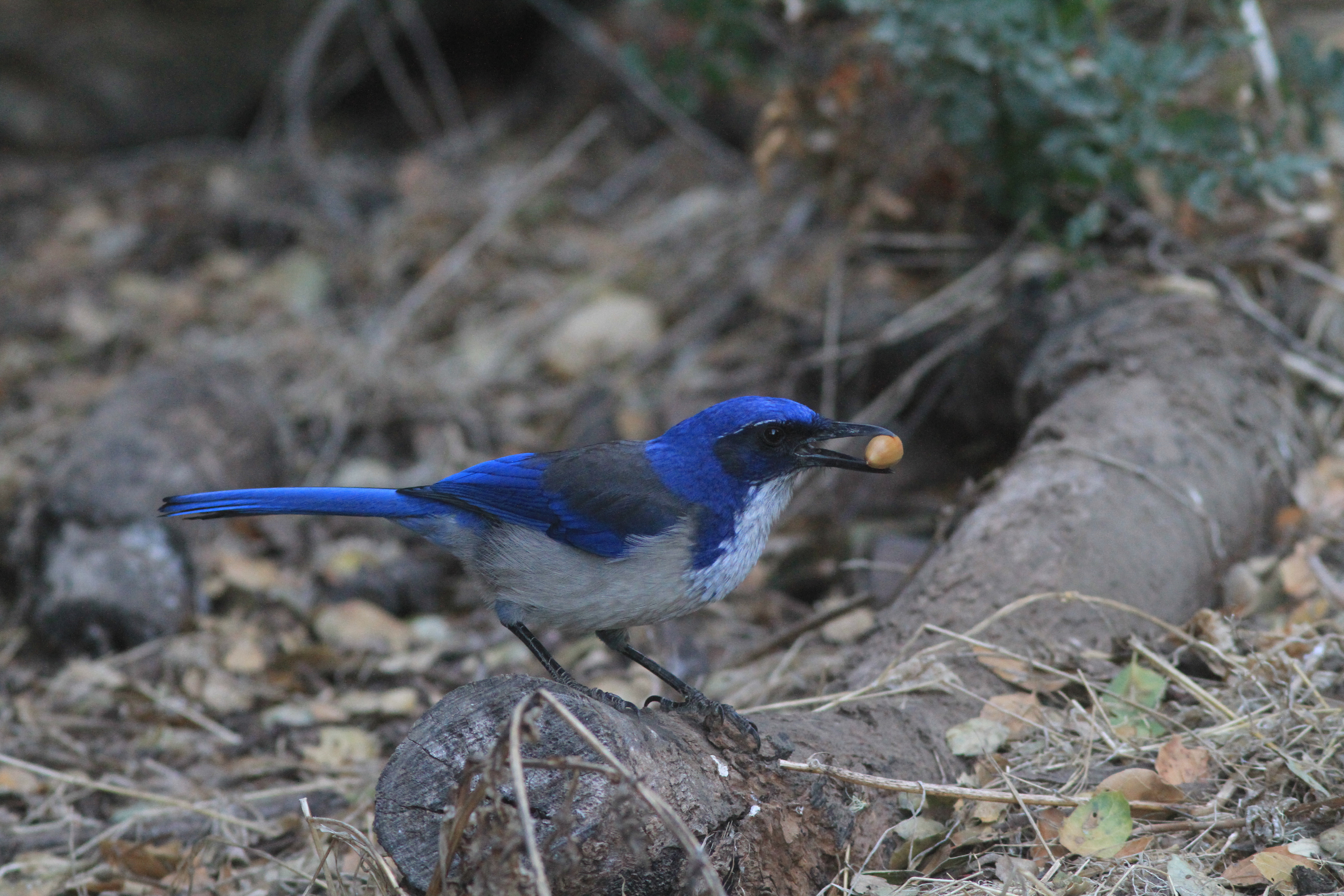Island Scrub Jays Are the ‘Cache Kings’ of the Channel Islands
By Annually Stashing Thousands of Acorns, They Ensure the Next Generation of Island Oak Trees

Kayaking trips around the Channel Islands National Park always require detailed planning and some luck with the weather and sea. Counting on favorable conditions is not realistic, especially around a chain of islands swept by wind and fog.
However, when Scott Sillett, a biologist with the Smithsonian Migratory Bird Center, texted me about meeting up with him and his crew of researchers to trap and study island scrub jays, the opportunity was too good to pass up, even though stiff northwest winds were going to make me work for it. After all, it’s not every day you get to talk with an expert in the field about one of the rarest birds in the world. “A fascinating and ecologically really important bird,” said Sillet. “There are a lot of unknowns surrounding it.”
Get the top stories in your inbox by signing up for our daily newsletter, Indy Today.
The island scrub jay is found on Santa Cruz Island and nowhere else on Earth. There are about 2,400 of them on the island, making it the smallest home range of any bird in North America. Overall, they are a third larger than their mainland counterpart — the western scrub jay — have thicker bills, and boast a more brilliant blue hue.
All adults participate in hunting down the acorns of the endemic island oak tree. Although they are prolific hoarders of acorns, they will cache just about anything of interest, including island cherries. “They put as much food away as they can to get through a winter,” said Sillet.
One jay can stash between 3,500-6,000 acorns a year. Most importantly, they lodge them point down, setting them up to become seedlings for the next generation of island oaks. They also plant them up-slope, which is vital in restoring the natural habitat of the largest isle off the California Coast. For decades, Santa Cruz was ravaged by sheep and feral pigs, denuding it of its unique flora.
“I like to think their role is restoring oak woodlands,” said Scott Morrison, director of California Conservation and Science Programs for The Nature Conservancy (TNC). “They’re ecosystem engineers, and they have prolific memories. The recovery of vegetation on Santa Cruz Island is pretty phenomenal, and the jays have had a hand in it.”
There was a time when island scrub jays inhabited neighboring San Rosa Island, but they went extinct in the late 1880s due to overgrazing by sheep and cattle. Biologists, however, are now taking their cues from the birds by planting oak acorns on Santa Rosa in the hope that the trees will once again stand sturdy and strong on its rolling ridge tops. “This gives communities a head-start on climate change,” said Morrison. “I’m a big believer in a whole bunch of species benefiting on the islands.”
At the Santa Barbara Independent, our staff is working around the clock to cover every aspect of this crisis — sorting truth from rumor. Our reporters and editors are asking the tough questions of our public health officials and spreading the word about how we can all help one another. The community needs us — now more than ever — and we need you in order to keep doing the important work we do. Support the Independent by making a direct contribution or with a subscription to Indy+.



